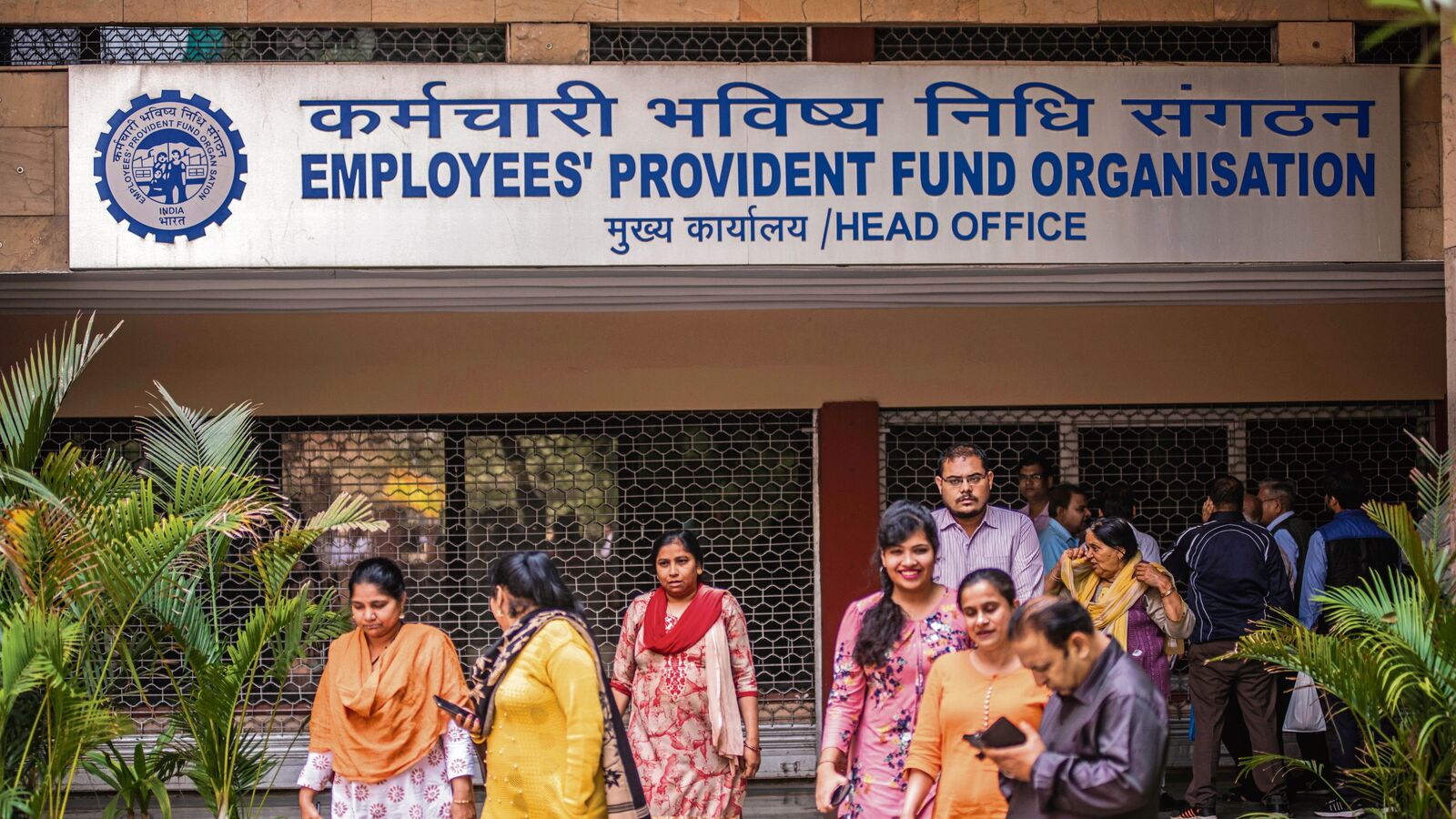For many who watch the pension space in India, 2016 was a watershed year. The government decided to split provident fund (PF) settlements into two: one payment at the time of leaving service and the rest to be paid upon turning 58 years old. Feeling deprived, employees protested, and some of the protests turned violent. Watching people take to the streets on an EPF matter was a first.
Last week, memories of 2016 flooded back, and a sense of déjà vu overcame me when the Employees’ Provident Fund Organisation (EPFO) announced changes to the guidelines governing partial and final PF withdrawals. The internet erupted in anger over the changes, and many raised concerns about the deprivation these changes would mean for employees.
These concerns are misplaced and stem from a flawed understanding of the EPF objectives.
Background and the proposed changes
For the longest time, the EPF has not only been a fund for old-age retirement savings, but also one to fund select life goals. These were made possible through limited withdrawals from the member’s balance for specific purposes. House acquisition, repayment of home loan, education of children, marriages, distress in case of job loss, etc. were the defined purposes under which premature withdrawals were permitted. Ludicrously, premature withdrawals were also permitted if one could not pay electricity bills (seriously, yes).
At first glance, these seem like leaks in the corpus, but remember that these rules were framed long before the advent of the lending industry in India, when the EPF was one of the primary savings vehicles for salaried employees.
A combination of good design (limiting the number of withdrawals and the amount) and poor administration (multiple application forms and numerous proofs) ensured that members didn’t deplete their PF balances and had money set aside for retirement. Some of this changed with the advent of technology at the EPFO a few years ago. While the complicated guidelines for withdrawals were retained, documentary verifications were minimized and payments were made directly to the employee (for instance, in the earlier regime, home loan repayments were paid directly to the financial institutions). These changes, while ensuring easier access to EPF balances, limited the extent of access.
The current changes seek to further simplify the process. Details are yet to be provided, but reportedly the thirteen clauses are to be converted to three, with one revolving around illness, marriage, and education, another around housing and the last around ‘special circumstances (employment loss, etc.). Additionally, a member can withdraw multiple times compared to the current once; the service tenure requirement will be a uniform (and significantly lesser) one year; no paperwork needs to be provided for most of the premature withdrawals. Overall, a good move if implemented well.
Two other changes that were announced, which piqued the interest of many, are the introduction of a minimum balance (25% of contributions) and an increase in the wait period to obtain final EPF settlement (from the current two months to proposed twelve months). Both have been implemented to nudge members to retain balances in the EPF for old age. Naysayers, however, view both as detrimental to the interest of the member, painting them as a regulatory capture of a member’s money.
Why these concerns are unfounded
For one, the EPF is neither a savings bank account nor an emergency fund. The core of its purpose is to provide adequate old-age security. Constant withdrawals are detrimental to this objective. For the pension purist, a complete stoppage of premature withdrawals is best-fit for its purpose, but is not practical. Remember, for many, withdrawing from their own PF is a better idea than debt. Striking the balance between the purist’s view and the real needs of the member requires innovation in design.
Secondly, delaying the final settlement from two to twelve months may sound ‘draconian’, but it is a useful deterrent-based nudge to retain balance in the EPF for old age. It remains unclear if 25% of contributions is the right amount for both the nudge and the deterrent, but it certainly is the right thinking and a good start.
For many who seek flexibility, EPF regulations provide sufficient flexibility. One can limit contributions to 12% of the basic salary of ₹15,000 per month instead of on total basic salary. Similarly, through a voluntary provident fund (VPF), one can increase contributions. Sadly, though, a combination of inflexible employer HR systems and an absent member education programme means that these are either unheard of or cannot be utilised by employees.
The arguments against the changes are myopic. In India, pensions have always held different meanings for different people. This means complexities in design. And no absolute solution. For once, the EPFO has struck the right balance. Hopefully, it will be able to implement these changes effectively as well. An erratic technology platform, coupled with a poor member database, will challenge the EPFO in its implementation.
It is fashionable these days to roast the EPFO. But a bad idea to make a habit of it.
Amit Gopal is a Bengaluru-based pension consultant.
